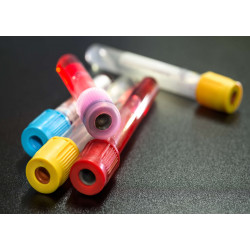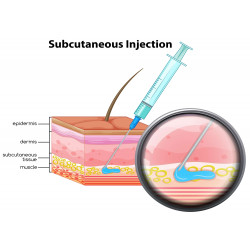Intravenous Cannulation (OSCE)
Introduction
- Greet patient and introduce yourself 👋
- Confirm patient details ✍
- Briefly explain the procedure in a patient friendly manner
- Get patient consent
- Check for any relevant allergies
- Ensure the patient is sitting with their arms exposed
- Check the patient is not in any pain
- Wash hands ✋
Equipment
 Disposable gloves ✋
Disposable gloves ✋
 Disposable apron
Disposable apron
 Sharps bin 🗑
Sharps bin 🗑
 Tourniquet
Tourniquet
 2% chlorhexidine gluconate in 70% isopropyl alcohol swab
2% chlorhexidine gluconate in 70% isopropyl alcohol swab
 Cannula
Cannula
 Cannula dressing
Cannula dressing
 Luer lock cannula cap/extension set
Luer lock cannula cap/extension set
 Gauze
Gauze
 Sterile dressing pack
Sterile dressing pack
 10ml Syringe 💉
10ml Syringe 💉
 0.9% 10ml saline
0.9% 10ml saline
 Clean procedure tray
Clean procedure tray
Preparation
- Put gloves on ✋
- Place all unpackaged equipment on procedure tray
- Draw saline into syringe 💉
- Attach extension set to the flush if using
- Identify the arm more suitable for cannulation (patient preference/pre-existing medical conditions should be considered)
- Place a field and pillow beneath the chosen arm

Choosing a vein
- Inspect arm for suitable cannulation site (should be unrestrictive and skin should be intact, not at the joining of 2 veins) 💉
- Lay the arm in a comfortable position, giving you sufficient space for cannulation
- Tap the chosen vein as the patient clenches and unclenches their fist to visualise it more easily ✊
- Apply tourniquet 4 to 5 finger widths above your chosen cannulation site
- Palpate the vein to assess whether it is suitable (feels springy not hard)
- Release tourniquet
- Clean site with alcohol swab for 30 seconds ⌛
- Allow site to dry
Insertion of cannula
- Wash hands ✋
- Put on clean gloves ✋
- Reapply tourniquet
- Uncover cannula and prepare it (open wings if present, withdraw then replace the needle slightly, unscrew the cap at the back)
- Pull the skin beside the chosen cannulation site tight with your non-dominant hand ✋
- Inform patient you are ready to insert the cannula and they should expect to feel a sharp scratch
- Insert cannula above vein, at a 10 to 30° angle 📐
- Flashback confirms you have punctured the vein successfully
- Lower the cannula and insert the needle approximately 2mm further to reach the vein’s lumen 📏
- Withdraw the introducer needle slightly and observe blood filling the cannula tubing
- Continue to withdraw the needle and simultaneously insert the cannula into the vein
- When the cannula is inserted fully and the needle is almost removed, release the tourniquet
- Place a sterile gauze near cannula tip
- Hold cannula still while you remove introducer needle completely
- Apply pressure on sterile gauze
- Connect Luer lock cap/extension hub to cannula hub
- Appropriately dispose of sharps and waste 🗑
- Tape cannula wings to skin, ensuring insertion site remains visible
Flushing the cannula
- Inject saline flush into cannula (stop if pain or swelling)
- Close cannula port
- If flushed successfully, secure the cannula using a dressing ✅
Completion
- Tell the patient to procedure is complete ✅
- Thank patient
- Wash hands ✋
- Document cannulation details where appropriate ✍
Summary:
- Greet the patient and explain the procedure
- Prepare by collecting equipment, putting on PPE and washing your hands
- Identify the arm more suitable for cannulation and place a pillow underneath it
- Identify suitable cannulation site and apply tourniquet 4-5 finger widths above it
- Insert cannula into lumen of vein
- When cannula is fully inserted and the introducer needle is almost fully removed, release tourniquet
- Apply pressure and attach Luer lock cap to cannula hub before taping wings to skin
- Complete procedure by thanking patient and appropriately disposing of waste
Related Articles
This step by step guide is designed to take you through performing venepuncture in OSCEs.
This step by step guide is designed to take you through performing a subcutaneous injection in OSCEs.
This step by step guide is designed to take you through performing an intramuscular injection in OSCEs.
















